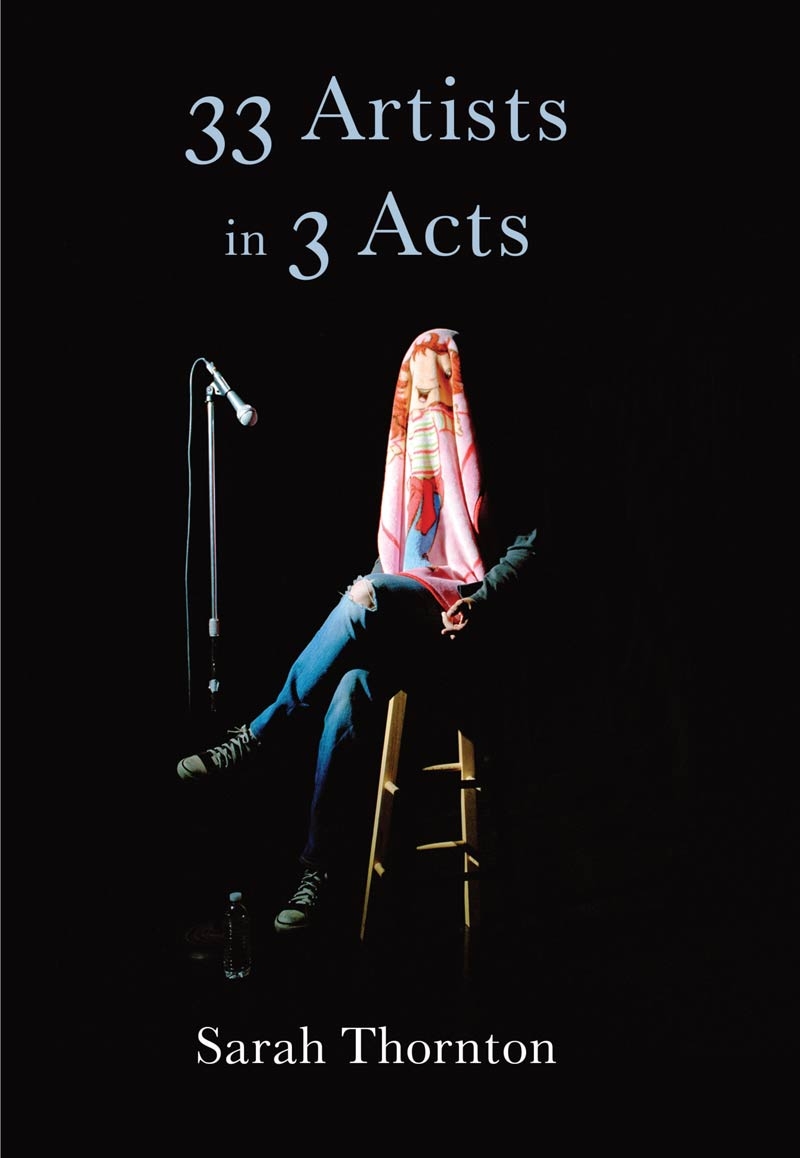Towards the middle of 33 Artists in 3 Acts, Sarah Thornton recounts Francesco Bonami’s classification of artists around four poles: real or fake, good or bad. So for Bonami, Nauman is a good real artist, Jasper Johns a ‘real artist but his work is shit’, Francis Alÿs is a good fake artist and Ai Weiwei a bad fake artist. Alÿs and Ai have their own chapters in Thornton’s book, which takes the form of a series of interviews with artists that circle back to the question, ‘What is an artist?’ Thornton, who trained in part as an anthropologist, divides the book into three ‘Acts’; ‘Politics’, ‘Kinship’ and ‘Craft’; and within these devotes individual ‘Scenes’ to interviews with 33 artists plus two curators, one critic and two family members of artists. Each section uses particular artists as focal points – in ‘Politics’ these are Jeff Koons and Ai Weiwei, who Thornton returns to after interviews that range from Eugenio Dittborn to Martha Rosler. The second section is loosely structured around the artist-couple Carroll Dunham and Laurie Simmons (with cameos from their daughters Grace and Lena Dunham). The third section circles round the perhaps surprising juxtaposition of Andrea Fraser and Damien Hirst.
Despite Thornton’s nod to anthropology, the main strength of this book is that it reveals that when Thornton drops the ethnographer-to-the-artworld pose she is in fact a rather good reporter who is willing to let her subjects do the talking. There are surprisingly few books on the contemporary artworld that give artists centre stage and do not presume to speak for them via catalogue essays or only allow them to answer questions that are overloaded by curator-speak. Thornton wisely keeps herself out of picture (and the weaker sections are when she overly intrudes) and rarely tries to rise above a Sunday newspaper magazine level of interrogation. But by giving her subjects free rein, the artists she writes about come over as having actual personalities. Cattelan is a horny yet nervy chancer who is prone to name-dropping; Fraser is so intense about her practice that she’s on the verge of bursting into tears at any moment; Dunham and Simmons seem decent and committed in different yet complementary ways; Hirst comes over as distinctly unpleasant and insists on addressing Thornton in what she describes as a ‘puzzling “gay” voice’ that might have homophobic overtones. A further strength of the book is that Bonami’s shaky system of classification is about as concrete as anyone interviewed gets to conclusive answers about what it is to be an artist. Views which are proffered by one artist are contradicted by others. Statements that have been carefully constructed by artists to bolster their own position are hijacked pages later by throwaway comments by other artists.
Thornton’s first book on contemporary art, Seven Days in the Art World (2008) was commercially successful but seemed curiously vacuous, perhaps in part because it somewhat breathlessly detailed the structures around art production – the prizes, auctions, art fairs and so on, rather than artists or art. This is a far better book because the subjects Thornton has chosen are much more interesting, and she seems less star-struck by artworld players than in her previous book. As to the answers to what an artist is and does, the two curators come up with typically neat if ultimately empty responses. The artists, on the other hand, tend to prevaricate and get embarrassed when Thornton finally cajoles something out of them. Dittborn’s observation about making works that would confuse censors of his country’s oppressive regime – ‘The most interesting artwork was incomprehensible to the army anyway’ – is an unflashy testament to what artists can do that the rest of us can’t.
This article originally appeared in the October 2014 issue
